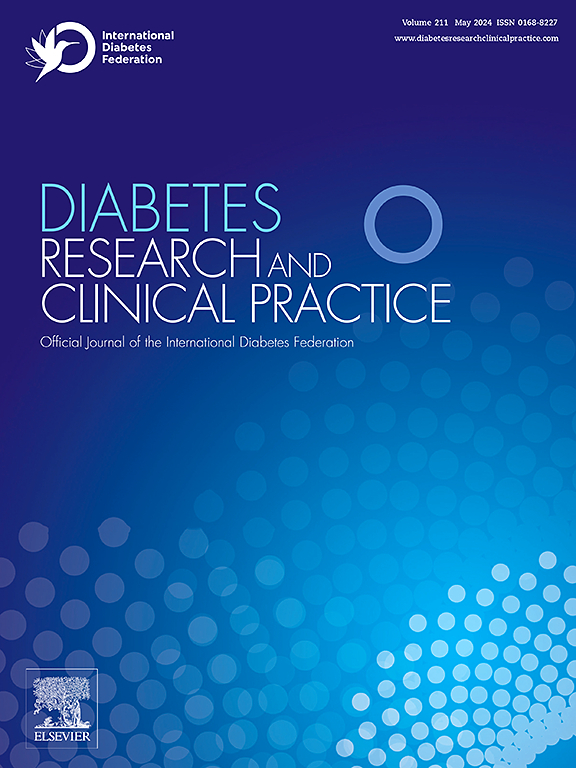Relationship of haptoglobin phenotype and levels with sight-threatening diabetic retinopathy in type 2 diabetes: A Fenofibrate Intervention and Event Lowering in diabetes (FIELD) substudy
IF 6.1
3区 医学
Q1 ENDOCRINOLOGY & METABOLISM
引用次数: 0
Abstract
Aims
Haptoglobin (HP) phenotype has been reported to modulate fenofibrate benefit on coronary artery disease in type 2 diabetes. It is unknown whether HP phenotype and levels modulate fenofibrate benefit on sight-threatening diabetic retinopathy (STDR).
Methods
In plasma from 8,047 Australasian adults with type 2 diabetes in the FIELD trial, HP phenotype was determined, and HP levels were measured at baseline and after six-week fenofibrate run-in.
Results
There were 307 new first on-trial STDR events over five years. Baseline HP levels and phenotype were not related to STDR risk. Fenofibrate benefit on STDR vs. placebo (–32 % overall), was greatest in participants with the lowest baseline HP level tertile (hazard ratio [95 % CI] 0.41 [0.26–0.65], vs. 0.82 [0.56–1.21] and 0.84 [0.56–1.27] for tertiles 2 and 3 respectively, P for heterogeneity = 0.019). During run-in, fenofibrate reduced HP levels by 20.7 %. However, fenofibrate benefit on STDR did not differ significantly by HP phenotype or change in HP levels during run-in after adjustment for confounding factors.
Conclusions
Regarding STDR, fenofibrate benefit is greatest in type 2 diabetes patients with the lowest baseline HP levels, which may reflect patients more susceptible to oxidative retinal injury. All HP phenotypes benefit from fenofibrate.
求助全文
约1分钟内获得全文
求助全文
来源期刊

Diabetes research and clinical practice
医学-内分泌学与代谢
CiteScore
10.30
自引率
3.90%
发文量
862
审稿时长
32 days
期刊介绍:
Diabetes Research and Clinical Practice is an international journal for health-care providers and clinically oriented researchers that publishes high-quality original research articles and expert reviews in diabetes and related areas. The role of the journal is to provide a venue for dissemination of knowledge and discussion of topics related to diabetes clinical research and patient care. Topics of focus include translational science, genetics, immunology, nutrition, psychosocial research, epidemiology, prevention, socio-economic research, complications, new treatments, technologies and therapy.
 求助内容:
求助内容: 应助结果提醒方式:
应助结果提醒方式:


